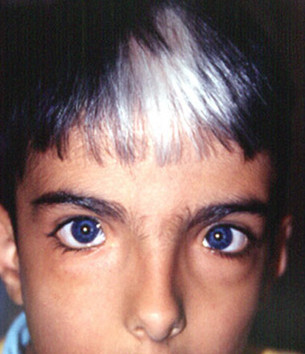As a dedicated explorer of Street Fighter lore, I’ve often found myself crafting theories, some of which have evolved with new evidence, while others have been discarded entirely. This process is usually straightforward. However, one particular theory from my past has always felt incomplete. Despite gathering considerable evidence, my initial conclusion seemed to lack a definitive element. This lesser-known theory, perhaps thankfully, remained somewhat obscure due to its inconclusive nature.
For nearly two years, I’ve revisited this original theory, continually seeking more information. The evidence supporting it grew, yet the crucial, canonical, in-game confirmation remained elusive. Consequently, I kept this theory under wraps, waiting for the opportune moment to revisit it.
That moment has arrived. While a definitive ‘smoking gun’ remains missing, I believe sharing this theory might prompt readers to uncover the canonical link I’ve been searching for, finally resolving this lingering question. This theory, initially conceived in 2018, was sparked by Event Hubs’ feature on “The Truth About G and Q?”. Inspired, I pitched several theories hoping for a similar spotlight, this being one of them. The central question of this particular theory, focusing on a character from Street Fighter III, is: is Elena deaf?
 Elena in Street Fighter V
Elena in Street Fighter V
My initial theory posited that Elena exhibits several indicators of a mild form of Waardenburg syndrome, a rare genetic disorder. Two primary characteristics stood out. The first was her striking appearance as a black woman with white hair and blue eyes. A hallmark of Waardenburg syndrome is precisely this combination: white hair and blue eyes. Notably, cases in Africa have documented children born with blue eyes, all diagnosed with the condition. While it appears more prevalent in individuals with lighter complexions, white hair remains a prominent feature.
 Child with Waardenburg Syndrome showing white forelock
Child with Waardenburg Syndrome showing white forelock Example of white forelock in Waardenburg Syndrome
Example of white forelock in Waardenburg Syndrome
The second significant characteristic linked to Waardenburg syndrome is progressive deafness. Initially, I dismissed the idea of Elena’s deafness based on a scene in her Ultra Street Fighter IV intro, where she appears to converse normally with her father. This interaction seemed to suggest unimpaired hearing.
However, upon closer examination, this scene proves less conclusive than initially thought. While Elena engages in verbal communication, it doesn’t definitively confirm her ability to hear her father’s words. Furthermore, the portrayal of Dave Lyons in “See No Evil, Hear No Evil” demonstrates that a deaf person can convincingly feign hearing.
Lacking a definitive in-game moment to confirm Elena’s hearing status, we must turn to circumstantial evidence. Given Elena’s articulate speech, a subtle clue emerges: her accent.
According to Fandom, Elena possesses an “unusual accent,” which she attributes to her global travels in a Street Fighter III win quote: “My accent? I must have picked it up during my travels!” This self-acknowledgement of a foreign accent is peculiar. Typically, a person retains their native accent regardless of travel. Elena could have simply identified as Kenyan, her nationality, without further explanation. While her accent in the intro might sound Kenyan-influenced, Fandom also notes that “Elena’s voice actress speaks English with a Japanese-Australian accent, despite the character being Kenyan.”
If Elena is indeed deaf, this discrepancy in accent becomes understandable. She would lack auditory reference for a typical Kenyan accent, potentially leading her to develop a unique speech pattern based on her own internal perception of language.
A counter-argument often raised is Elena’s apparent ability to perceive sounds, as Fandom states, “Elena is also able to hear and comprehend various rhythms as well as the voices of the wind and trees.” However, this doesn’t necessarily invalidate the deafness theory. Instances where Elena claims to hear, such as her Street Fighter IV intro and a non-canonical Street Fighter X Tekken ending with Dudley, require closer scrutiny.
In the latter scenario, Elena approaches Pandora’s Box and, placing her ear close, declares it emits no negative aura and that she can “hear its rhythm.” Intriguingly, this action mirrors that of Ludwig van Beethoven, who, grappling with hearing loss, would press his ear to his piano to perceive notes, even using a stick to amplify vibrations. Thus, Elena’s interaction with Pandora’s Box could be interpreted not as hearing, but as feeling its vibrations to assess its nature.
Her canonical appearances frequently emphasize her perception of rhythm through feeling rather than hearing, evident in numerous win quotes. If Elena cannot aurally perceive her surroundings, her sensory experience would differ significantly. For her, hearing and feeling might be intertwined. While unable to hear sounds in the conventional sense, she could still discern them based on tactile sensations – differentiating a human voice from the crash of a wave through their distinct vibrational qualities.
This sensory interpretation extends to her connection with nature. Her ability to “hear” the emotions of trees in her village could stem from feeling their subtle vibrations, imperceptible to typical human hearing, allowing her to sense their state and detect potential threats.
Even if the preceding evidence remains unconvincing, the potential for future hearing loss further supports the theory. As mentioned, Waardenburg syndrome includes progressive hearing loss as a symptom. Elena’s reported hypersensitivity to sounds could, therefore, be re-evaluated as auditory hallucinations, a known phenomenon among individuals with hearing impairment. The abstract of “Auditory Hallucinations in Adults With Hearing Impairment: A Large Prevalence Study” confirms that “auditory hallucinations are common among patients with hearing impairment, and increase with impairment severity.”
While auditory hallucinations can also indicate schizophrenia, Elena displays no other associated symptoms. Her sound mental health and trusted position as her tribe’s princess – entrusted to represent her village in the Street Fighter IV tournament – argue against such a diagnosis. Instead, it suggests a need to conceal a potential affliction. Deafness would be a significant vulnerability in combat, exploitable by adversaries seeking to harm or usurp her royal status. Presenting herself as fully sensory capable, however, projects an image of strength and invulnerability. Silence about her potential deafness, therefore, becomes a strategic necessity for Elena’s protection.
Finally, revisiting my earlier Elena theory, her theme song “Beats In My Head” gains a deeper, more literal meaning. The “beats” she experiences might indeed be “in her head” – felt rhythms and imagined sounds. While she might enjoy music, her experience could be primarily tactile, lacking the auditory dimension. This doesn’t diminish her enjoyment, but necessitates secrecy. These beats, and her secret, must remain within her.

